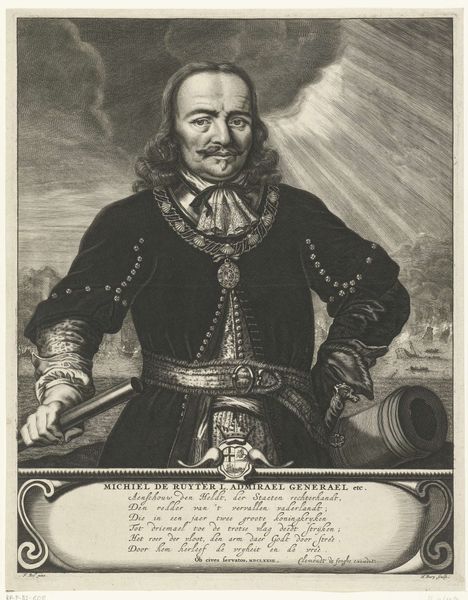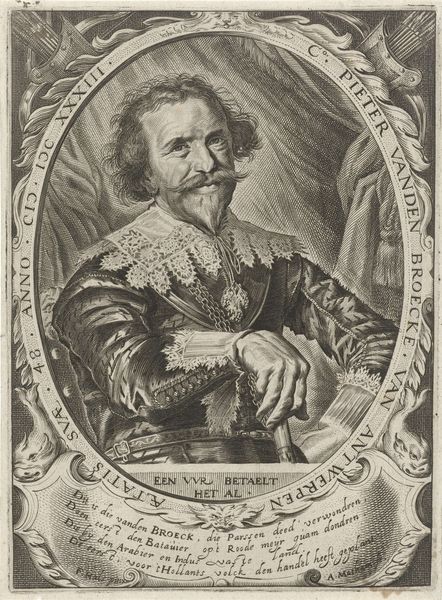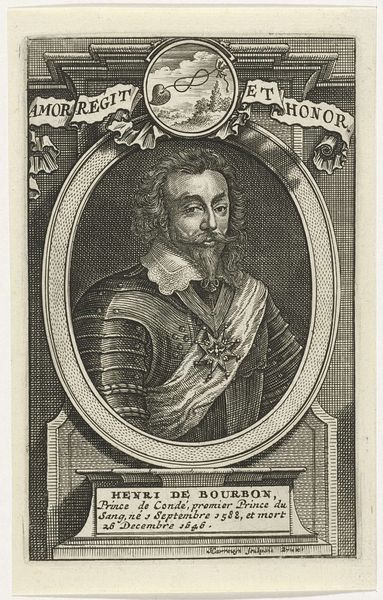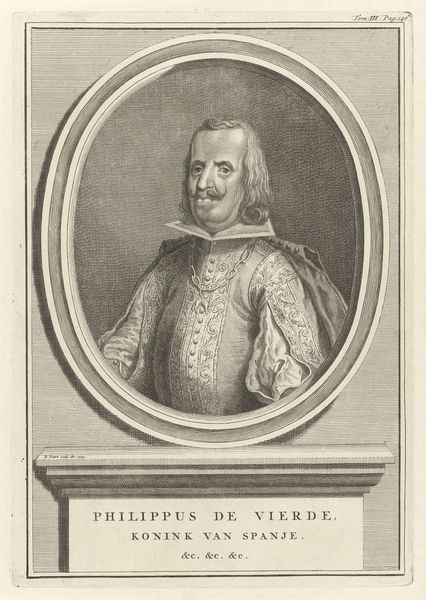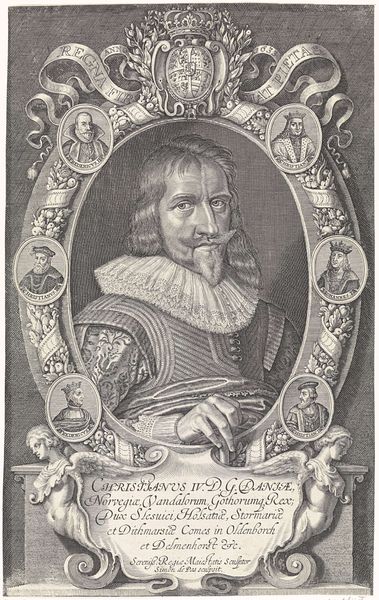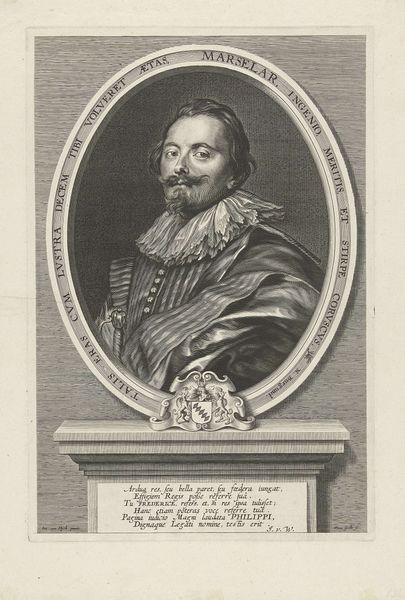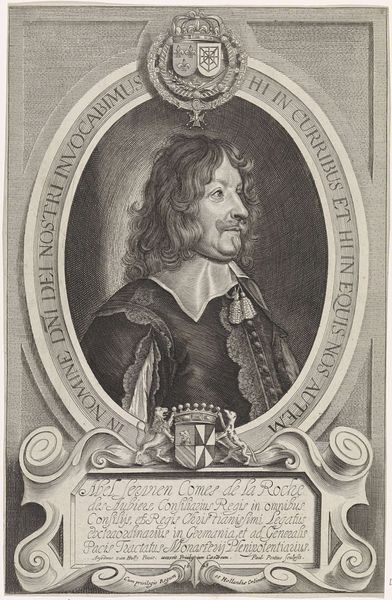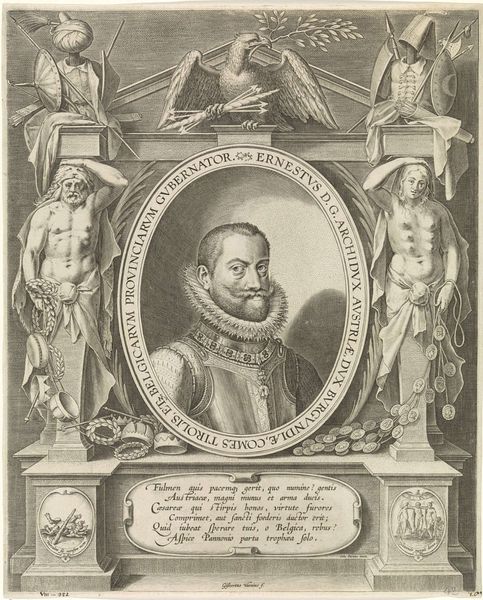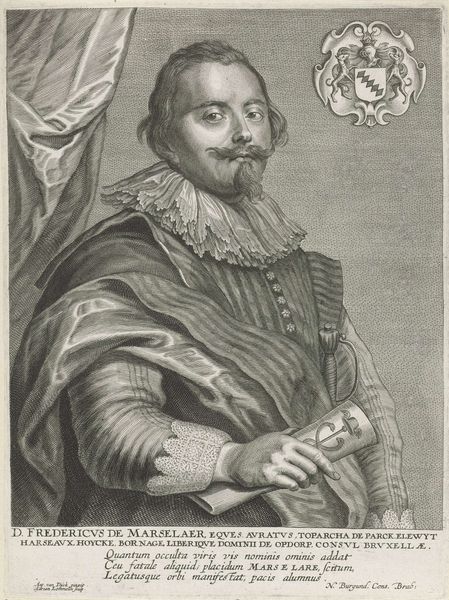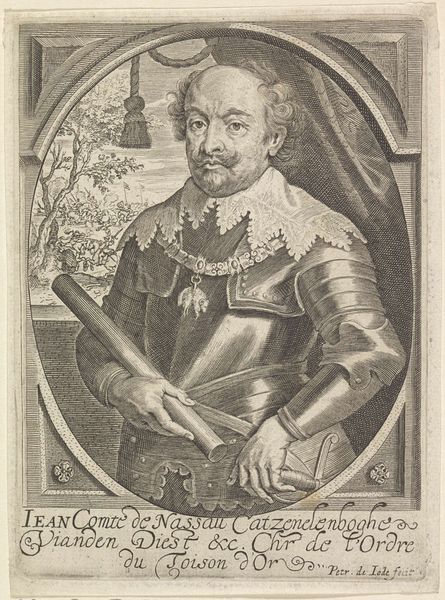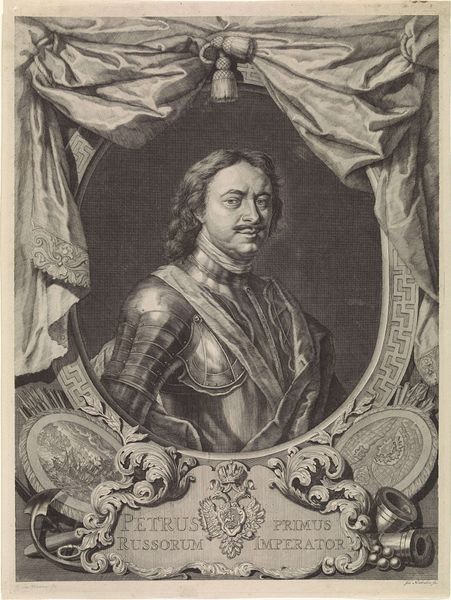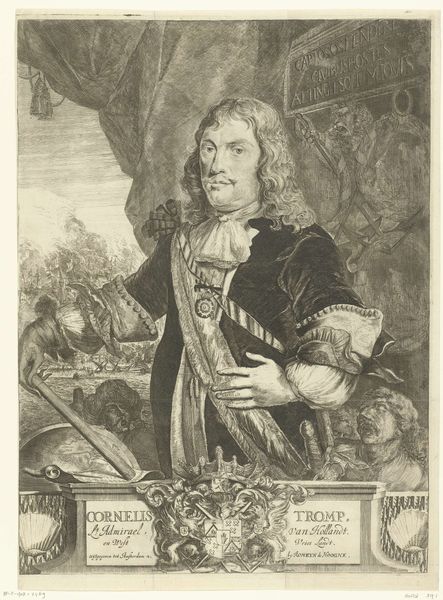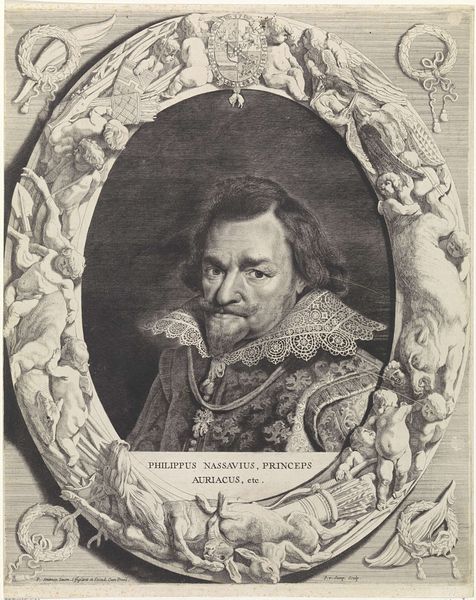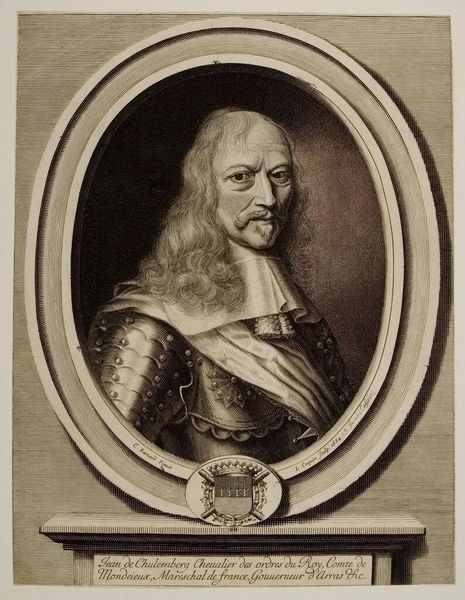
print, engraving
#
portrait
#
baroque
# print
#
portrait reference
#
history-painting
#
engraving
#
portrait art
Dimensions: height 465 mm, width 347 mm
Copyright: Rijks Museum: Open Domain
Editor: Here we have "Portret van Michiel de Ruyter," made between 1673 and 1676 by Romeyn de Hooghe. It's an engraving. It has such a commanding presence, and the details are incredible! How do you interpret this work? Curator: This portrait allows us to consider the power dynamics inherent in image-making and historical representation. Michiel de Ruyter, a celebrated naval admiral, is deliberately positioned within a visual language of dominance. Note the objects surrounding him—the globe, the naval battle in the background. They speak to Dutch maritime power in the 17th century, a power built on colonial exploitation. Editor: So, you're saying the portrait isn't just about celebrating a hero, but also about understanding the broader historical context of colonialism? Curator: Precisely. We need to critically examine whose stories are being told and at whose expense. De Ruyter's success was inextricably linked to the Dutch East India Company and its practices. Who benefits from his image being circulated so widely? Who is rendered invisible? Editor: That's a really interesting point. I hadn't considered the implications of celebrating historical figures without acknowledging the darker sides of the period. Curator: Think about the gaze implied within the work. Who is invited to look, and what assumptions do they bring? Understanding power structures allows us to have a richer, albeit more complex, understanding of art history. How does the portrait, as propaganda, still resonate today, and whose voices are silenced within its celebration? Editor: I see. By looking at this portrait critically, we can think about the relationship between art, history, and social justice. Curator: Exactly! Engaging with art should involve dismantling dominant narratives and amplifying marginalized voices. Editor: Thanks! That’s given me a lot to consider. Curator: My pleasure. Never underestimate the power of art to illuminate and challenge!
Comments
No comments
Be the first to comment and join the conversation on the ultimate creative platform.
